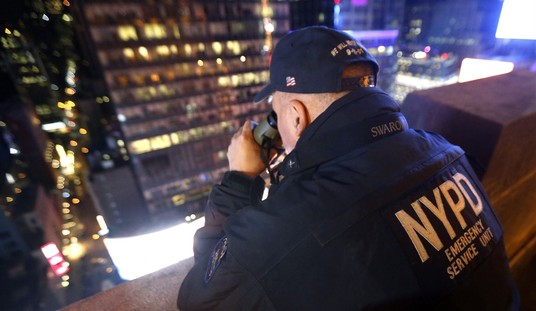As the artillery rolls into Ukraine, and the notion that Vladimir Putin’s Russia is an ally has been revealed to one and all to be a fantasy, it’s time to finally end our policy insanity of relying on Russian spaceships for American access to space.
Since the last space shuttle flight two-and-a-half years ago, our only means of getting NASA astronauts (or anyone) to the ISS has been on the Soyuz launch system, at an ever-rising cost, now over $70M a seat as of last August. Alternate competing U.S. means to replace it are under development in NASA’s Commercial Crew Program, but Congress has been continually underfunding the effort in order to instead funnel money to the Space Launch System, a giant rocket with no funded payloads and no apparent mission other than providing job security in the states and districts of those on the congressional space committees.
This issue goes beyond that of sending American taxpayer dollars to the Russian space establishment that could instead be purchasing lower-cost American flights from American providers and creating a new high-tech American industry.
What is nuclear non-proliferation worth to us? This shouldn’t be an issue of civil space policy, but it is. The Iran/North Korea/Syria Non-Proliferation Act (INKSNA) states that we will not trade with any nation that supports any of those countries in the development of nuclear weapons and delivery systems. Russia has been doing both for years, and in order for us to continue to utilize their services for ISS access and lifeboats, Congress has to continually waive the law, essentially rendering it toothless with respect to one of the most significant violators of it (a year ago, they waived it out to 2020).
There are research implications as well. The ISS is currently limited to a crew of six, due to a requirement that they always be capable of evacuation to earth, using two three-person Soyuz capsules as lifeboats. Because most of the crew time is devoted to maintaining the facility itself, NASA has found it difficult to have more than one crew member doing actual research. Thus, adding just one more crew member to the station could probably more than double the amount of research performed there.
This has real-world costs. For instance, research by the Astrogenetix company in the weightless environment has shown some promise for finding ways to control Methicillin-resistant Staphylococcus aureus (MRSA), a super bug that kills thousands in the U.S. annually from staph infections for which antibiotics are ineffective. That is, every single day that a cure isn’t found costs about fifty lives in the U.S. alone. Balance that against the slight possibility that we might lose a few astronauts.
Assuming that the lifeboat requirement is justified (dozens winter over annually at Amundsen-Scott station at the South Pole with no means of evacuation), Space Exploration Technologies’ (SpaceX) Dragon capsule can carry seven crew members. That is, if it were to be used as a lifeboat (with the addition of a necessary new docking adapter that will be available in the next year or so) the additional crew could be added to dramatically improve ISS productivity.
Thus, use of the Dragon now would have two benefits. First, we could stop depending on the Russians for access to the ISS immediately, and stop shipping money to a nation that is not merely indifferent to our security, but clearly now outright hostile to it. Second, it would more than double the value of a space facility in which we’ve invested tens of billions and continue to spend billions per year.
Why don’t we?
Ostensibly it is because we don’t want to lose another astronaut crew, though even without its launch abort system currently in development, the Falcon-9/Dragon combination is probably as, or more, reliable at this point than anything we flew in the 1960s. The launcher has had several successful flights with no significant failures, and the capsule has been to orbit and back safely several times. The same would apply for the Atlas V, with its long string of successful flights, and the Boeing Crew Space Transportation (CST) capsule as its payload, another proposed Commercial Crew solution, though the CST is not as far along in its development, and hasn’t had a test flight yet. Adding an abort system will improve the safety of the system, but that doesn’t mean that it is “unsafe” now. “Safe” and “unsafe” are not binary conditions – they are a continuum.
But even if the systems are as “unsafe” as some critics imply, what does it say about the nature of our space goals, not to mention nuclear non-proliferation, that we are unwilling to risk the lives of brave Americans who signed up to be astronauts to accomplish those goals? I would postulate that most, if not all of them would take umbrage at the notion that they are not willing to hazard themselves for their country, as did their forebears in Apollo. The notion that “safety is the highest priority,” as several in Congress have said in the past few years, is stark testimony to how unimportant those same congresspeople think it is to open the harshest final frontier, or to save thousands of earthly lives through medical and other breakthroughs. It trivializes the astronauts’ accomplishments, and makes it difficult to justify the billions that we spend on them. It is long past time for such thinking to end and, for the first time since the moon race, to take American spaceflight seriously again. On SpaceX’s next ISS flight in a couple weeks, SpaceX and NASA should move heaven and earth to have an astronaut aboard.









Join the conversation as a VIP Member